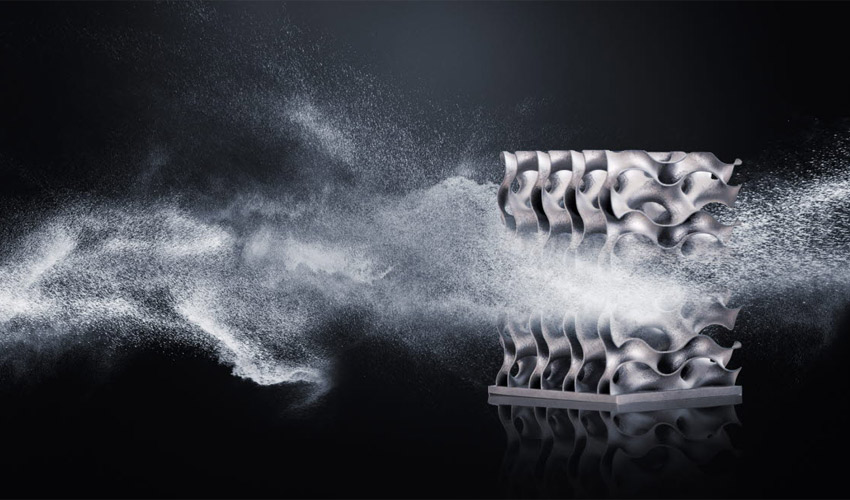The Rise of Metal 3D Printing
Additive manufacturing, more commonly known as 3D printing, has rapidly evolved from a niche technology to a powerful tool across various industries. While plastic 3D printing has been widely adopted, the ability to print directly with metal has opened up entirely new possibilities. This technology, often referred to as Direct Metal Laser Sintering (DMLS) or Selective Laser Melting (SLM), uses a high-powered laser to melt and fuse metal powder layer by layer, building a three-dimensional object according to a digital design. The precision and complexity achievable surpasses traditional subtractive manufacturing methods, like casting or machining.
Unleashing Design Freedom and Complex Geometries
One of the most significant advantages of metal 3D printing is its unparalleled design freedom. Traditional manufacturing processes often impose limitations on the shapes and geometries that can be created. Intricate internal structures, complex lattice designs, and highly customized features are easily achievable with 3D printing, leading to lighter, stronger, and more efficient parts. This opens doors for innovation in various sectors, from aerospace to medical implants, allowing engineers to push the boundaries of design and functionality.

Material Variety and Expanding Applications
The range of metals that can be 3D printed is constantly expanding. Commonly used materials include titanium alloys, stainless steel, aluminum alloys, and nickel-based superalloys. Each material offers specific properties, making it suitable for different applications. Titanium alloys, for example, are valued for their high strength-to-weight ratio and excellent biocompatibility, making them ideal for aerospace and medical applications. Stainless steel offers corrosion resistance, while aluminum alloys provide lightweight solutions. This versatility ensures metal 3D printing remains a viable option across a broad spectrum of industries.
Cost-Effectiveness and Streamlined Production
While the initial investment in metal 3D printing equipment can be substantial, the technology offers several long-term cost advantages. It reduces material waste significantly compared to traditional methods, as it only uses the necessary material to create the part. Furthermore, it minimizes the need for tooling, which can be expensive and time-consuming to produce. This translates into faster production times and reduced lead times for projects, offering significant cost savings, particularly for low-volume or highly customized parts.
Revolutionizing Industries: Aerospace and Beyond
The aerospace industry is a prime example of how metal 3D printing is transforming manufacturing. The ability to create lightweight yet incredibly strong parts is crucial for aircraft design. 3D printing allows engineers to optimize component designs for improved fuel efficiency and performance. Beyond aerospace, the technology finds applications in medical device manufacturing, producing highly customized implants and surgical tools. The automotive industry uses it to create lightweight and high-strength components, improving fuel economy and vehicle performance. Even the energy sector is exploring its potential for creating more efficient and durable components for turbines and other energy systems.
Addressing the Challenges: Scalability and Quality Control
Despite its potential, metal 3D printing faces some challenges. Scaling up production to meet high-volume demands remains a significant hurdle. The speed of printing and the size of the build chamber are factors that limit production capacity. Maintaining consistent quality control throughout the printing process is also crucial. Ensuring the dimensional accuracy and surface finish of the printed parts are within the required tolerances requires careful monitoring and calibration of the equipment. Further advancements in materials science and printing technology are necessary to fully address these challenges.
The Future of Metal Additive Manufacturing: A Collaborative Approach
The future of metal 3D printing lies in collaborative efforts between researchers, manufacturers, and end-users. Ongoing research focuses on developing new materials with enhanced properties, improving printing speeds and scalability, and refining quality control methods. The integration of artificial intelligence and machine learning can further enhance the efficiency and precision of the process. As the technology continues to mature and become more accessible, it’s poised to play an increasingly significant role in shaping the future of manufacturing, leading to more innovative, efficient, and sustainable production processes.
Sustainability and the Environmental Impact
Metal 3D printing offers potential advantages in terms of sustainability. The reduced material waste compared to traditional subtractive manufacturing processes contributes to a smaller environmental footprint. Furthermore, the ability to create highly customized parts on demand minimizes the need for large inventories of pre-manufactured components, reducing storage space and transportation needs. The development of more sustainable metal powders and recycling processes for spent powder will further enhance the environmental benefits of this technology. Read more about metal additive manufacturing.

